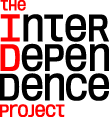
Theme: Openness
About the Meditation
Meditation session led by Kaira Jewel Lingo.
The guided meditation begins at 19:31.
For centuries Himalayan practitioners have used meditation to quiet the mind, open the heart, calm the nervous system, and increase focus. Now Western scientists, business leaders, and the secular world have embraced meditation as a vital tool for brain health.
Whether you’re a beginner, a dabbler, or a skilled meditator seeking the company of others, join expert teachers in a forty-five-minute weekly program designed to fit into your lunch break. Each session will be inspired by a different work of art from the Rubin Museum’s collection and will include an opening talk, a twenty-minute meditation session, and a closing discussion.
This program is supported with thanks to our presenting partners Sharon Salzberg, the Interdependence Project and Parabola Magazine.


Related Artwork

One of the most recognizable mantras in the world is om mani padme hum. While many know it, not all realize that it is associated with the bodhisattva Avalokiteshvara, who has countless forms, both peaceful and wrathful, red and white, with thousands of arms, or maybe just two. Depicted here is the red Avalokiteshvara. Around his radiant body, tethered to his gaze by fine lines of gold, are worldly deities, many originating in the Hindu tradition, such as Shiva, Brahma, Surya, Varuna, Ananta, Chandra, Vishnu, and Agni. This symbolizes his ability to see and manifest his compassion in all realms while all other deities pay homage to him. Painted in warm red hues, he stands against a lapis background with his head at a charming angle. He beckons viewers with his right hand, held in the gesture of generosity.
Rakta Avalokiteshvara is a bodhisattva who has made a vow to remain in the cycle of rebirth through countless lifetimes to work for the benefit of other beings. Bodhisattvas display determination and self-sacrifice, vowing not to pass into the blissful state of Nirvana until all sentient beings are free and accumulating wisdom and merit in order to become buddhas. Practitioners develop this aspiration or “mind of awakening,” also known as bodhichitta, recite mantras, and visualize the deity, aspiring to make their body, speech, and mind indistinguishable from the bodhisattva’s. Red Avalokiteshvara’s appearance is laid out in ritual texts and painted in thangkas to help practitioners with visualization and training of their mind.
At the center bottom of this painting Avalokiteshvara’s wrathful form as the Great Black One with six hands is shown in an aureole of fire. His compassionate nature is unchanged, in spite of the intimidating appearance. His destructive power is aimed at extinguishing the obstacles to spiritual realization.
About the Speaker

Kaira Jewel Lingo is a Dharma Teacher with a lifelong interest in blending spirituality with social justice. Her work continues the Engaged Buddhist movement developed by Thich Nhat Hanh, and she draws inspiration from her parents’ stories and her dad’s work with Martin Luther King, Jr. After living as an ordained nun for 15 years in Thich Nhat Hanh’s monastic community, Kaira Jewel now teaches internationally in the Zen lineage and the Vipassana tradition, as well as in secular mindfulness, at the intersection of racial, climate, and social justice with a focus on activists, Black, Indigenous, People of Color, artists, educators, families, and youth. Based in New York, she offers spiritual mentoring to groups and is the author of We Were Made for These Times: Ten Lessons in Moving through Change, Loss and Disruption from Parallax Press.
Her teachings and writings can be found at www.kairajewel.com.
